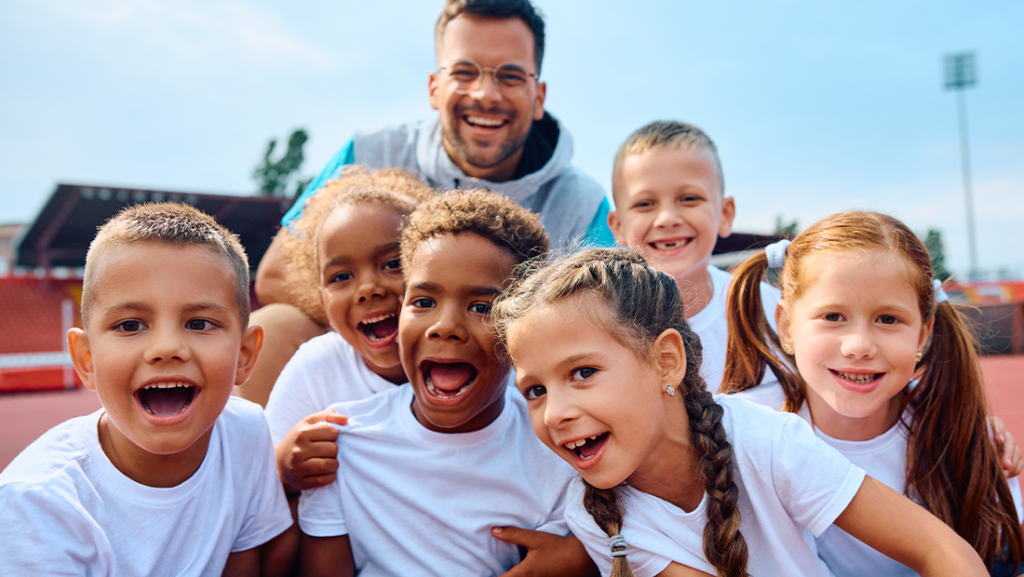Why Policy Matters in Sport
How Setting Standards Can Lead to a Safer, Healthier Youth Sports Experience

Parents, guardians, and coaches can all agree that safe sport settings are essential for young athletes to grow and thrive. And, while it’s easy to recognize the impact of a sports environment defined by inclusion, support, and encouragement, understanding the policies put in place to set youth athletes up for success is another story.
How exactly does policy contribute to these aspiring and inspiring athletic atmospheres? Who creates and enforces the policy? And how can you better understand relevant policies to make sure the athletes in your life are benefiting?
Impactful Policies that Protect Athletes
When an athlete, youth or elite, steps onto the pitch or walks onto the court within the U.S. Olympic and Paralympic Movement, there are policies in place to protect them from abuse and misconduct, ensuring they’re treated with respect during every form of participation in sport—from practice to the locker room to the end of year award ceremony.
The U.S. Center for SafeSport is a driving force behind creating, implementing, and enforcing these policies that redefine the sport environment. Following the 2017 Safe Sport Act, the U.S. Center for SafeSport developed the Minor Athlete Abuse Prevention Policies, also known as the MAAPP.
The MAAPP sets standards to help protect athletes. Sport organizations that are part of or affiliated with the U.S. Olympic and Paralympic Movement are required to adopt and follow the MAAPP. Additionally, sport organizations outside of the U.S. Olympic and Paralympic movement are also encouraged to adopt the MAAPP because safer sport environments should be the standard for every athlete, in every sport.
From equestrian riders to hockey players, the MAAPP protects millions of athletes in over 50 sports representing the entire U.S. Olympic and Paralympic Movement.
Three Core Elements of the MAAPP
So, what mandatory minimum standards does the MAAPP set? We’ve listed three core elements of the MAAPP along with a brief explanation breaking down how the policy protects young athletes.
The MAAPP helps make sport settings safer for young athletes by:
-
Limiting one-on-one interactions between adult participants and youth athletes. According to the MAAPP, contact between adult participants1 and youth athletes must be “observable and interruptible.” This helps reduce the opportunity for potentially unsafe or inappropriate conduct during one-on-one interactions, like private lessons or individual meetings.
-
Setting program requirements for education and training: The MAAPP requires certain adults who interact with youth athletes to get SafeSport™ Trained. Educating leaders and those who work with minor athletes to be better equipped to prevent, recognize, and respond to abuse helps protect athletes and prioritize their well-being.
- Increasing accountability: These policies increase accountability by setting rules and establishing policy violations within the U.S. Olympic and Paralympic Movement. This can lead to penalties outlined in the SafeSport Code, and may result in an adult being temporarily or permanently restricted from the U.S. Olympic and Paralympic Movement.
Lastly, it’s important to remember that the MAAPP only applies when there’s “in-program contact.” This means that an adult participant is present, a minor athlete is present, and the contact or activity is related to sport participation—like team dinners, driving to an event, and weekly practice, just to name a few.
Does Your Sport Follow the MAAPP?
Understanding if your sports organization is required to follow the MAAPP depends on whether it’s part of or affiliated with the U.S. Olympic and Paralympic Movement. If you’re unsure, start by reaching out to your sport league and asking if there’s an affiliation.
Keep in mind that the MAAPP is the mandatory minimum standards. Many sports and organizations within the Movement go above and beyond these baseline qualifications, implementing their own sport-specific MAAPP containing additional policies you’ll want to be aware of. If you coach within the Movement or if your child plays a Movement sport, we encourage you to get to know your sport’s MAAPP by visiting your sport organization’s Safe Sport webpage or contacting their athlete safety representative.
Policy Matters
Sport is a unique opportunity for kids to grow as individuals, develop skills, and experience the power of teamwork. With these policies in place, youth athletes have the best opportunity to have a healthier and more successful sport experience.
Learn more about the MAAPP, how it works, and access helpful resources by visiting SafeSport’s MAAPP webpage.
1An Adult Participant is an individual 18 or older who is seeking to be, currently is, or was at the time of an alleged Code violation: a. A member or license holder of an NGB, LAO, or the USOPC; b. An employee or board member of an NGB, LAO, or the USOPC; c. Within the governance or disciplinary jurisdiction of an NGB, LAO, or the USOPC; d. Authorized, approved, or appointed by an NGB, LAO, or the USOPC to have regular contact with or authority over Minor Athletes.
